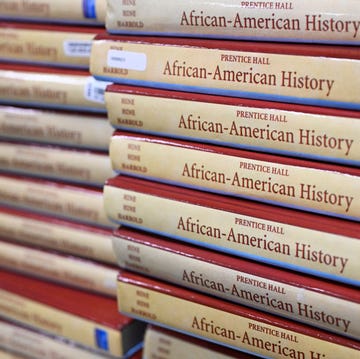As a child, my father dreamt of becoming an artist. Dreams were dangerous for a Black man in the 1960s. America had proven dreams weren’t for us; Jim Crow would see to it they were crushed along with your spirit, if not flat-out killed. My great-grandfather worked for the railroad, my grandfather for the steel mill. Their dreams were to feed their children and keep them safe, daring enough for men who’d escaped lynchings in Mississippi and seen combat in Korea. But radicalized by Emory Douglas’s Black Panther illustrations, comforted by Romare Bearden’s collages, and moved by the photos of Gordon Parks, my father nurtured his own artist’s dream. Even when his mother died of cancer his senior year of high school—which was the same year his brother came home shell-shocked from Vietnam and was diagnosed with schizophrenia, the same year my mom became pregnant with my oldest brother. The dream was deferred, but it would not dry out.
After having two boys, my mother says she prayed to God every night for a girl to be all hers, but she got me instead: a daughter, yes, but when I wasn’t climbing trees or sticking my nose in a book, I was with my father. We’d spend summer weekends hopping around the Smithsonian museums and artists’ studios in downtown D.C., and winter days building snow cities rather than snowmen. We made stop-motion movies with modeling clay, collaborated on murals using rolls of butcher paper spread the length of the garage floor, and sat on the covered porch during thunderstorms and drew the lightning bolts as they flashed. Dad taught high school during the day, and at night he’d hole up in his makeshift studio in the basement, sandwiched between the washing machine and sports equipment, painting to Miles or Coltrane. I’d be right there crouched on the floor, tinkering with pastels, pencils, paint—anything but coloring books, forbidden in our house, as they “stifled the imagination.” Every once in a while he’d ask me what color to use where, or for my interpretations of a theme he was exploring. It was the safest place in the whole world.
In first grade, my class did paintings of tepees. On Back to School Night, the biggest and brightest would be showcased in the front. Starting out, I did what everyone else had: a brown triangle, spiky top. But I kept going. The triangle became an hourglass filled with red moons, blue suns, zigzags, yellow polka dots. It was … something.
More From Harper's BAZAAR

I was bursting to hear my father’s review of my first group show, certain it was front and center, the parents all gathered around it breathlessly, like the crowd viewing the Mona Lisa. It was not in the front, though, or even in the back—but in the way back, by the bathroom. I was devastated. Of course, my parents hugged me and said that they’d loved it, that it was different and that that was what made it beautiful, and so on. Knowing firsthand the importance of having your work seen, understood, and appreciated, my father kept going. He took my painting—which didn’t look at all like a tepee—and had it professionally matted and framed. He hung that monstrosity of shapes and colors alongside his private collection in the most prominent place in our house, above the fireplace.
As the years passed and my interest in visual art morphed into an obsession with literature and film, he maintained our creative connection. He’d request a poem to match a photograph of his, or create illustrations to match my short stories. When angst struck, he suggested I write a play with my emotions as characters, and to pass the time when I was (frequently) grounded, we made a “boredom jar”—slips of paper listing creative tasks to complete, pulled at random. By the time I entered high school, my father was running his own gallery, and my first job was writing marketing copy for the exhibitions and editing curatorial statements. When I went off to college, he made sure we kept in touch by exchanging hand-drawn postcards. And when I came home to visit, I wrote my papers and studied for midterms in the basement studio while he painted.
At school I encountered kids whose parents treated them like their own creations, possessions to be controlled, with corresponding expectations about how they should be. I developed a new appreciation for my dad, who always treated me like a fellow artist, creating myself. I came to see my life as a work in progress, to surprise myself with my choices, to work with my mistakes.
Years after I’d graduated and was freelancing, I saw a painting at a local gallery that I couldn’t stop thinking about. It seemed to be a ridiculous purchase, considering I regularly had to decide between paying for groceries or gas, but … I called Dad.
“You love it?” he asked. I did. “Well, there you go. You love it, do it. You’ll figure out the rest.” He didn’t offer me a loan, or even a real answer. He simply told me what he’d been showing me my whole life: to use my imagination, to follow my heart, and that beauty is its own reason. I bought the piece, of course, and it now hangs in the most prominent place in my house, above the fireplace.

Allison Davis is a television writer. Her credits include American Horror Story (F/X,Netflix), 61st Street (AMC), The Underground Railroad (Amazon Prime), and David Makes Man (OWN, HBO Max). She has written, produced, and generally made merry for Google, This American Life, StoryCorps/NPR, PBS/ITVS, The Museum of African Diasporan Art, and Butler, Shine, Stern & Partners. She holds an MFA in Dramatic Writing from NYU's Tisch School of the Arts and a BA from Emerson College.














